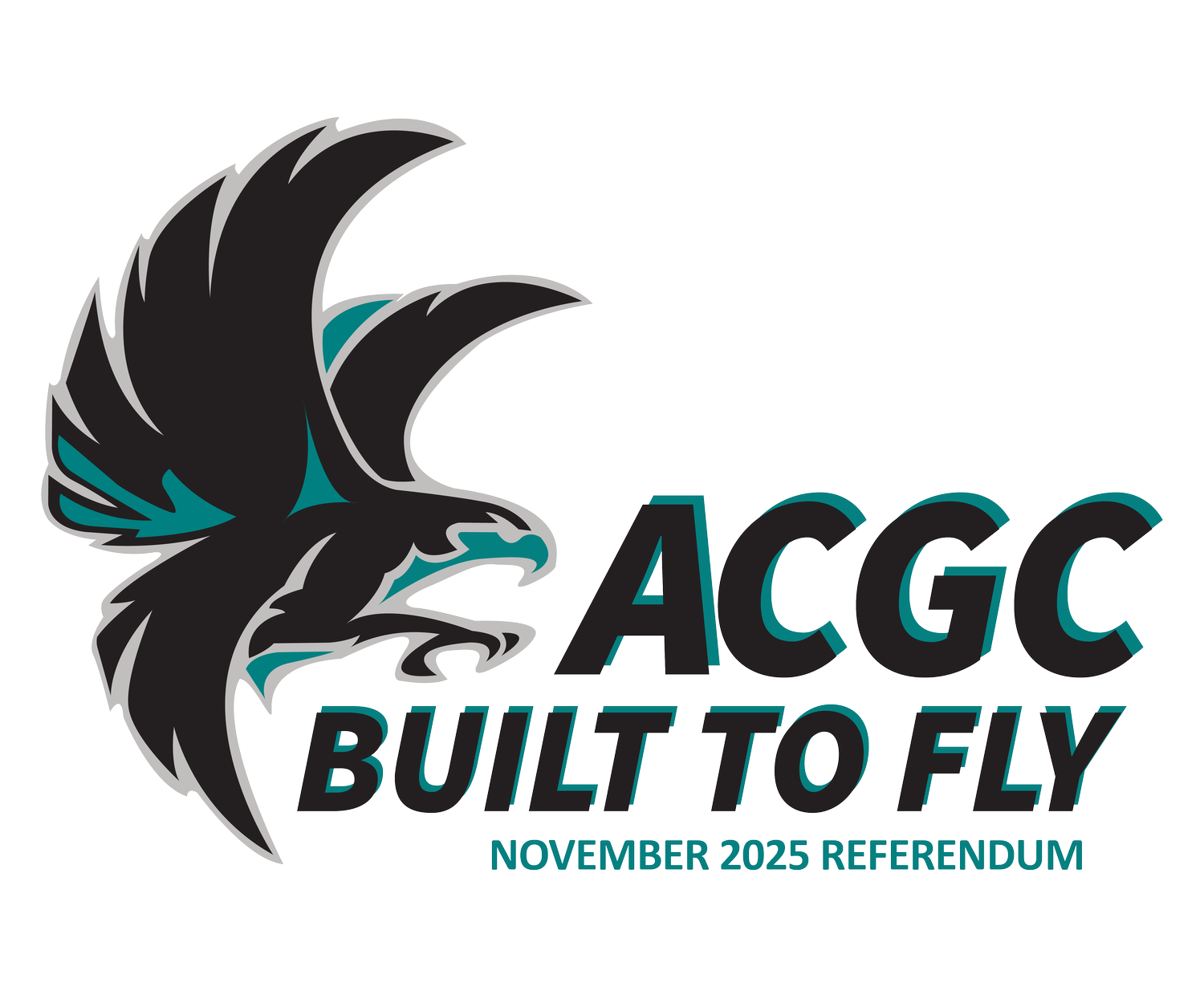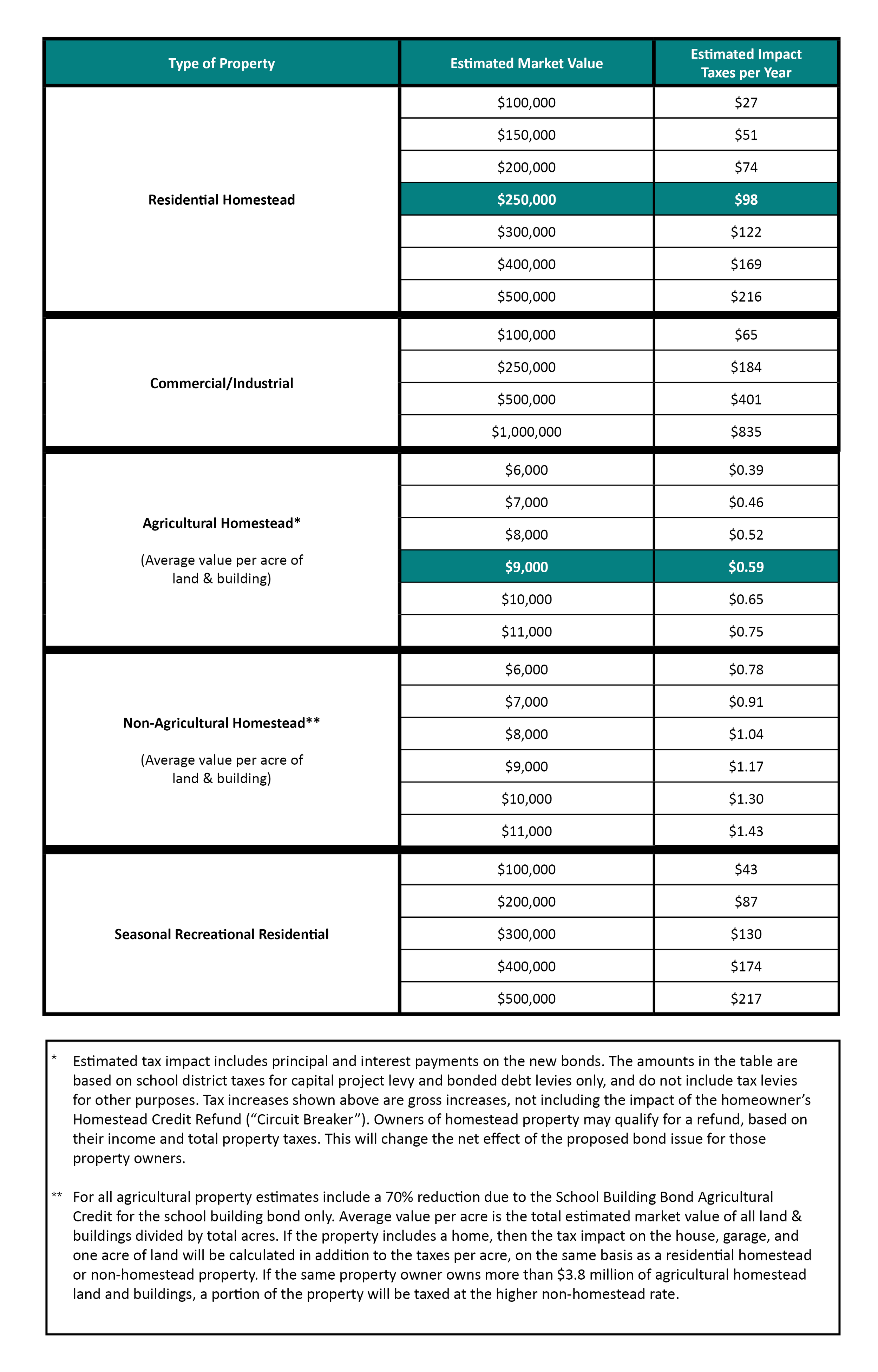
The Cost and Tax Impact
Explore financial information and the cost of the plan
On Tuesday, November 4, 2025, residents will vote on a $15.95 million bond referendum to build a new two-station multipurpose addition to our junior/senior high school including health and fitness space, improving our Career and Technical Education (CTE) space with additional equipment and furnishings, relocating our wrestling space inside our 5-12 building and renovating the space to better support our student athletes’ needs, and addressing critical deferred maintenance needs.
Across the State of Minnesota, facility improvements for public schools are funded through property tax increases. Our district and school board are committed to using taxpayer dollars wisely across all areas, particularly for a proposed building bond referendum like ours. We have worked carefully to ensure that the proposed $15.95 million bond referendum reflects residents' priorities and provides high value for taxpayer investment in our school.
Your individual tax impact will depend on the value of the property you own. For a $250,000 residential home in the district, the estimated tax increase would be $8.17 per month starting in 2026. For an agricultural homestead with an estimated market value of $9,000 per acre, the estimated tax impact would be $0.04 per acre per month ($0.59 per acre per year) starting in 2026.
Taxes to pay down approved bonds would expire after 20 years or when the bonds have been fully paid, whichever happens sooner.

Attention agricultural landowners
The State of Minnesota’s Ag2School Tax Credit is a 70% tax credit provided to all agricultural property except the house, garage, and one acre surrounding an agricultural homestead. This is not a tax deduction, but a dollar-for-dollar credit with no application required. This credit would remain at 70% for the life of the bond.
This tax credit reduces the contribution percentage for agricultural landowners. If the proposed plan is approved, approximately 42% of the total bond referendum’s principal and interest will be covered by the state’s 70% tax credit.
You may be eligible for ways to offset increases to your property taxes from the referendum, including:
Homestead credit refund: the state’s largest property tax refund program.
Special one-year refund: for excessive increases (12% increase and at least $100).
Senior tax deferral: helping those 65+ manage property tax bills.
Renters’ property tax credit: tax relief for renters.
The referendum may make you eligible for these refunds/credits or may increase the amount from any refunds/credits you already receive. In addition, an increase in property taxes may be deductible on your federal tax return if you itemize deductions.
Potential Ways to Offset Your Tax Impact
What is the Homestead Credit Refund?
The Homestead Credit Refund program began in 1967 and today is received by over 500,000 Minnesota homeowners. Homestead Credit Refunds are provided on a sliding scale and based on your household income and property tax bill. The refund increases as your property taxes increase, up to as much as $3,310 each year.
Excess property taxes: Refunds will range from 53% to 88% of the excess property tax you pay, as determined by a state formula based on income.
How Do I Know if I Qualify for the Homestead Credit Refund?
Your total household income is less than $139,320.
You are a Minnesota resident for at least half of the year.
You owned or occupied your home as of January 2, 2025.
Your property is classified as your homestead.
You have no delinquent property taxes.
As many as 65% of homeowners statewide may be eligible for annual state property tax refunds if property taxes make up more than 1% to 2.5% of household income (a threshold that adjusts based on that income). If eligible, you may apply for the Homestead Credit Refund by mailing in the paper M1PR form, or via the Minnesota Department of Revenue’s website.



